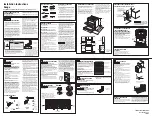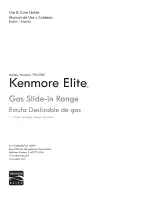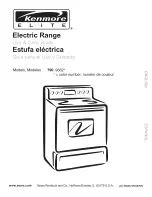
27
_ Induction cooking
OPERATING NOISES
You may hear the following operating noises:
• Cracking noises : The cookware you are using is made of two or more different materials.
• Whistling : You are using more than two cooking zones and the cookware you are using is
made of two or more different materials.
• Humming : You are using high power levels.
• Clicking : Electric switches are operating.
• Hissing, Buzzing : The cooling fan is operating.
These noises are normal and do not indicate any defects.
USING SUITABLE INDUCTION COOKWARE
Suitability test
Cookware is suitable for induction cooking if a magnet sticks
to the bottom of the cookware and the cookware is labelled
as suitable by the cookware manufacturer.
Better pans produce better results
• You can recognize good pans by their bases. The base should be as thick and flat as possible.
• When buying new pans, pay particular attention to the diameter of the base. Manufacturers
often give only the diameter of the upper rim.
• Do not use pans which have damaged bases with rough edges or burrs. You can scratch the
ceramic cooktop permanently if you slide a pan with a damaged base across the surface.
• When cold, pan bases are normally bowed slightly inwards (concave). They should never be
bowed outwards (convex).
• If you wish to use a special type of pan, for example, a pressure cooker, a simmering pan, or a
wok, please observe the manufacturer’s instructions.
Energy saving tips
You can save valuable energy by observing the following points:
• Always position pots and pans before switching on the cooking zone.
• Dirty cooking zones and pan bases increase power consumption.
• When possible, position the lids firmly on pots and pans so that the
lids cover them completely.
• Switch the cooking zones off before the end of the cooking time to
use the residual heat for keeping foods warm or for thawing.
Right!
Wrong!
Wrong!
(IB_Better)NE595N0PBSR_AA_DG68-00430A-02_EN.indd 27
30/10/2012 14:34:00
















































